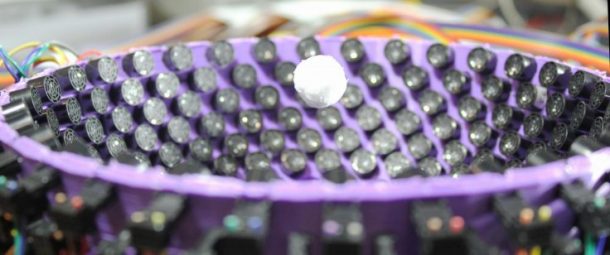Scientists at the University of Bristol used the world’s most powerful acoustic tractor beam to show that it is possible to levitate significantly larger objects than previously believed. Acoustic tractor beams use soundwaves to hold particles in mid-air. Magnetic levitation exists but acoustic levitation is thought to be better when it comes to handling liquids and solids.
Acoustic tractor beams were previously limited to extremely small particles. It was thought impossible to levitate objects with the wavelength greater than the wavelength of sound expecting them to spin uncontrollably. The study shows a new technique which controls a tornado-like structure that has a silent core.

It was discovered that changing the direction of the rapidly fluctuating acoustic vortices that make up the structure, the rate of rotation could be controlled and stabilized. Dr. Asier Marzo, the lead author on the paper from Bristol’s Department of Mechanical Engineering, said that “Acoustic researchers had been frustrated by the size limit for years, so its satisfying to find a way to overcome it.”
To demonstrate the technique, the scientists used ultrasonic waves with a pitch of 40kJz to make the vortices. The silent core was able to successfully hold a two-centimetre sphere made of synthetic polymer. This made it the largest object to have been held in the tractor beam so far.

This discovery could be the key to many practical applications. Bruce Drinkwater, Professor of Ultrasonics from the Department of Mechanical Engineering, who supervised the work, said he’s “particularly excited by the idea of contactless production lines where delicate objects are assembled without touching them.”
Dr. Marzo concurred, “I think it opens the door to many new applications.” Some of which might include creating medical devices, like drug capsules or micro-surgical implements. Even though 2 cm is not a lot, it is a start and maybe someday we could see levitating humans as well. Dr. Mihai Caleap, a Senior Research Associate who developed the simulations, added that “In the future, with more acoustic power, it will be possible to hold even larger objects. This was only thought to be possible using lower pitches making the experiment audible and dangerous for humans.”

This groundbreaking discovery is just the beginning and we will see a number of new experiments in the field in the not so distant future.


